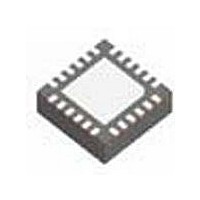LM4868LQX National Semiconductor, LM4868LQX Datasheet - Page 13

LM4868LQX
Manufacturer Part Number
LM4868LQX
Description
Manufacturer
National Semiconductor
Datasheet
1.LM4868LQX.pdf
(28 pages)
Specifications of LM4868LQX
Operational Class
Class-AB
Audio Amplifier Output Configuration
2-Channel Stereo
Output Power (typ)
3W
Audio Amplifier Function
Headphone/Speaker
Total Harmonic Distortion
0.30%%
Single Supply Voltage (typ)
3/5V
Dual Supply Voltage (typ)
Not RequiredV
Power Supply Requirement
Single
Rail/rail I/o Type
No
Power Supply Rejection Ratio
67dB
Single Supply Voltage (min)
2V
Single Supply Voltage (max)
5.5V
Dual Supply Voltage (min)
Not RequiredV
Dual Supply Voltage (max)
Not RequiredV
Operating Temp Range
-40C to 85C
Operating Temperature Classification
Industrial
Mounting
Surface Mount
Pin Count
24
Package Type
LLP EP
Lead Free Status / Rohs Status
Not Compliant
Available stocks
Company
Part Number
Manufacturer
Quantity
Price
Part Number:
LM4868LQX
Manufacturer:
NS/国半
Quantity:
20 000
Application Information
STEREO-INPUT MULTIPLEXER (STEREO MUX)
The LM4868 has two stereo inputs. The MUX CTRL Pin
controls which stereo input is active. As shown in the Truth
Table for Logic Inputs, applying 0V to the MUX CTRL input
activates stereo input 1, whereas applying V
CTRL inputs activates stereo input 2. To ensure correct
amplifier operation, unused MUX inputs should be tied to
GND.
(Pin out shown for the 24-pin Exposed-DAP LLP package. Numbers in ( ) are for the 20-pin MTE and MT packages.)
FIGURE 5. Input MUX Example
FIGURE 4. Typical Audio Amplifier Application Circuit
(Continued)
DD
to the MUX
20026728
13
Typical LM4868 applications use the MUX to switch between
two stereo input signals. Each stereo channel’s gain can be
tailored to produce the required output signal level by choos-
ing the appropriate input and feedback resistor ratio.
Another configuration uses the MUX to select two different
gains or frequency compensated gains that amplify a single
pair of stereo input signals. Figure 5 shows two different
feedback networks, Network 1 and Network 2. Network 1
produces increasing gain as the input signal’s frequency
decreases. This can be used to compensate a small,
full-range speaker’s low frequency response roll-off. Network
2 sets the gain for an alternate load such as headphones.
The circuit in Figure 6 uses Network 1 when driving external
speakers, switching to Network 2 when headphones are
connected. The normally closed control switch in Figure 6’s
headphone jack connects to the MUX CTRL pin. When
headphones are connected, the LM4868’s internal pull-up
that applies V
tor applies V
these control voltages automatically selects the amplifier
(headphone or bridge) and switches the gain (MUX channel
selection). Alternatively, leaving the MUX CTRL pin indepen-
dently accessible allows a user to select bass boost as
needed. This alternative user-selectable bass-boost scheme
requires connecting equal ratio resistor feedback networks
to each MUX input channel. The value of the resistor in the
RC network is chosen to give a gain that is necessary to
achieve the desired bass-boost.
Switching between the MUX channels may change the input
signal source or the feedback resistor network. During the
channel switching transition, the average voltage level
DD
DD
to MUX CTRL pin. Simultaneously applying
to the HP-IN and the external 100kΩ resis-
www.national.com
20026731












